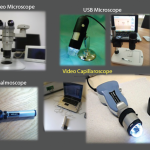WASHINGTON, D.C.—A mathematical problem that has baffled rheumatologists in recent years is: 10 does not equal 40. This statement refers to the fact that observational studies have estimated that about 10% of patients with rheumatoid arthritis (RA) will go on to develop interstitial lung disease (ILD), but studies that have employed screening high-resolution computed tomography (HRCT) chest imaging have indicated that up to 40% of patients with RA may have subclinical ILD.1 At the ACR Convergence 2024 session Rheumatoid Arthritis-Associated Interstitial Lung Disease: Advances in Screening, Diagnosis and Patient Phenotyping, three outstanding talks shed light on this important subject.
RA-ILD Mortality
The first speaker was Scott Matson, MD, assistant professor, Pulmonary, Critical Care and Sleep Medicine, University of Kansas Medical Center, Kansas City, and he began his talk by noting that the mortality rate is nearly 10% in the first year and 30% by year five in patients with a diagnosis of RA-associated ILD (RA-ILD).2 Even with advancing therapies for RA-ILD (e.g., immunosuppressants and antifibrotic agents), a narrow window exists in which to intervene to significantly reduce mortality. Dr. Matson pointed out that pulmonologists may be hesitant to treat RA-ILD when they have trouble distinguishing it from idiopathic pulmonary fibrosis (IPF). This is because, in 2012, The New England Journal of Medicine published an article demonstrating that patients with IPF treated with a combination of prednisone, azathioprine and N-acetylcysteine were found to have an increased risk of death and hospitalization compared with patients treated with placebo.3 This has forced clinicians to be very careful in distinguishing RA-ILD from IPF to determine if immunosuppression may be helpful or harmful.
Dr. Matson went on to describe in detail a study from Solomon et al., a prospective, randomized controlled trial that exclusively enrolled RA-ILD patients. In this phase 2 study, more than 120 patients with RA-ILD were assigned to receive pirfenidone, an antifibrotic agent, vs. 60 patients assigned to the placebo arm. The trial was stopped early due to slow recruitment and the COVID-19 pandemic, but pirfenidone did appear to slow the decline in the rate of forced vital capacity (FVC) over time in patients with RA-ILD.4 This is a similar result to that seen in other studies of antifibrotic medications, with an observable slowing of the FVC reduction over time. Dr. Matson explained that, given these results, patients with RA-ILD who demonstrate a predominantly usual interstitial pneumonia (UIP) pattern would typically be recommended for antifibrotic treatment. As to the best method for immunosuppression in these patients, the jury is still out and more data are needed.

